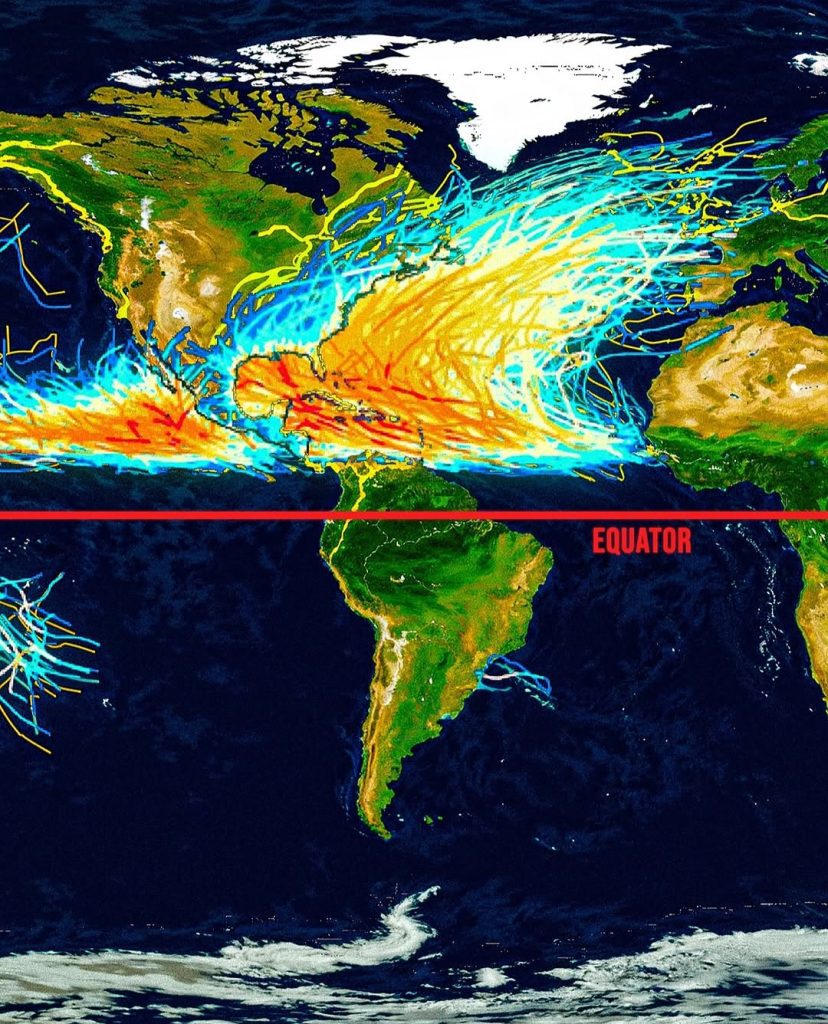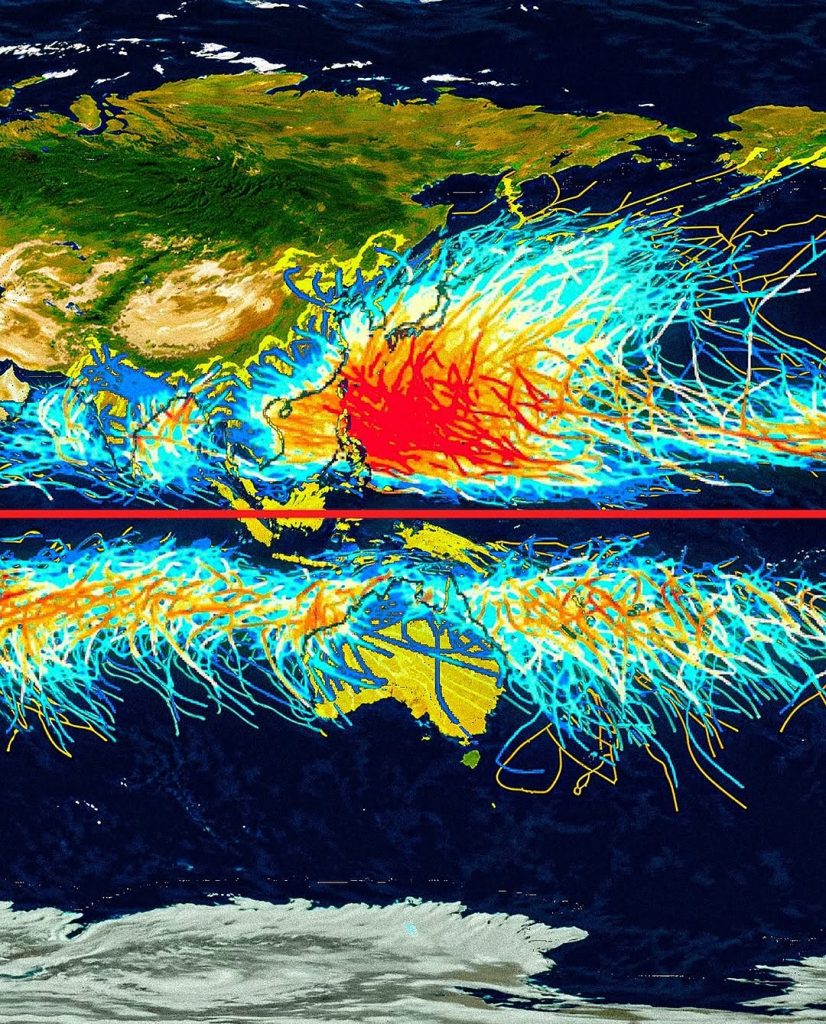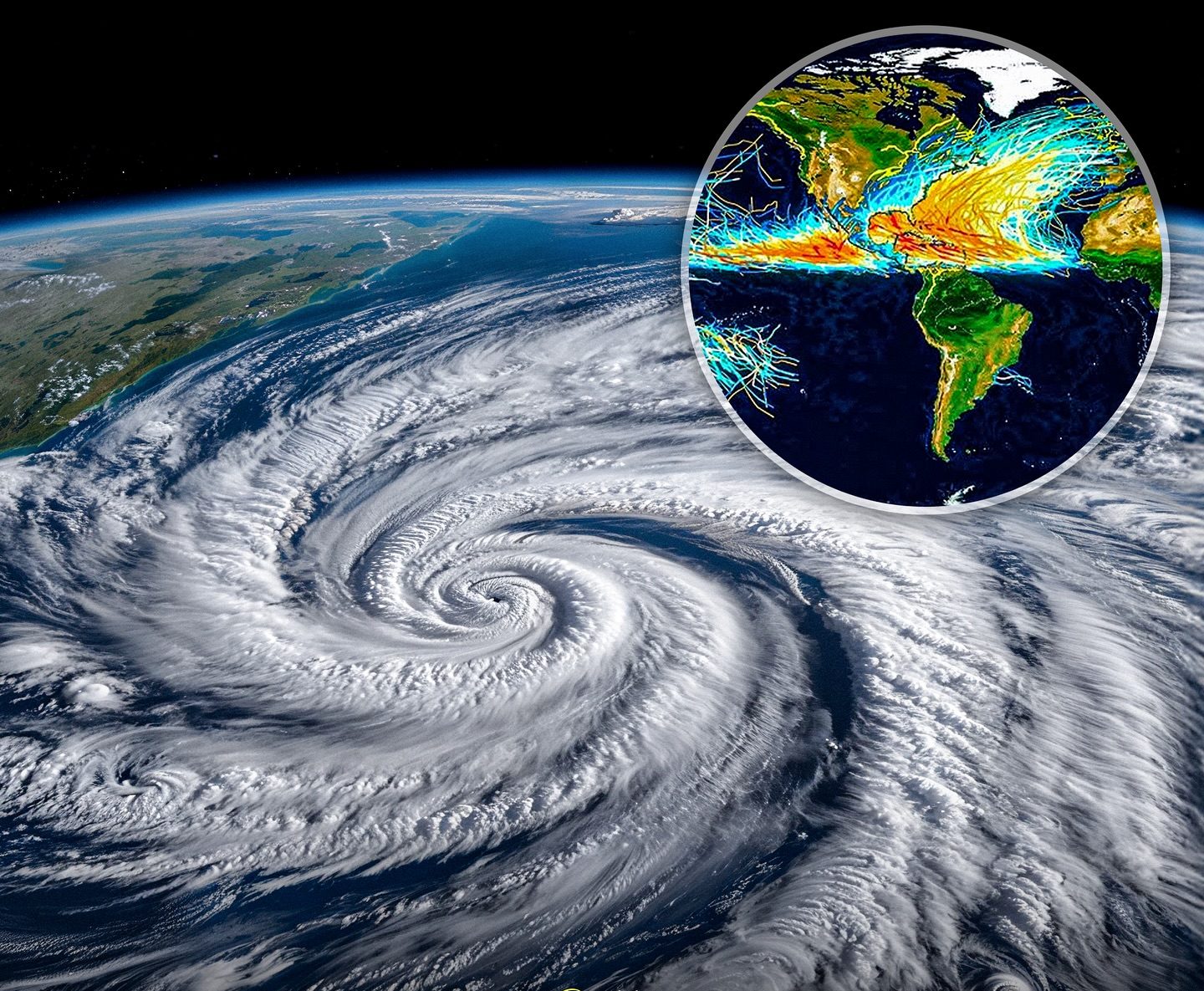Not a Single Hurricane Has Ever Crossed the Equator – The Science Behind Nature’s Invisible Barrier
There are countless mysteries about the planet we live on, but one of the most fascinating lies in the way storms move across the Earth. Hurricanes, those massive and often terrifying systems that can wreak havoc on coastal regions, have one strict rule they have never broken: not a single one has ever crossed the equator. This fact alone feels like something out of a natural wonder story, because when we imagine a hurricane, we think of nature’s raw and unstoppable force. Yet even the most powerful of storms is forced to respect an invisible boundary at the center of our planet.

If you look at maps that track hurricanes over the decades, you’ll notice their paths are spread widely across both hemispheres. In the northern hemisphere, they cut through the Atlantic and Pacific Oceans, carving tracks toward the Caribbean, North America, and East Asia. In the southern hemisphere, they roam across parts of the Indian Ocean and sometimes even head toward Australia. But at zero degrees latitude, where the equator divides our planet, there is nothing. No tracks. No exceptions. The record books confirm the same thing: there has never been a hurricane that has crossed the equator, not once in all of recorded history.
The reason behind this has nothing to do with chance. It is deeply tied to physics and the way Earth itself moves. Hurricanes depend on a force called the Coriolis effect, which comes from the planet’s spin. It’s what makes storms rotate in different directions depending on whether they are in the northern or southern hemisphere. Without this spin, hurricanes cannot organize themselves into the giant, swirling structures we see from space. And right at the equator, that Coriolis force drops to almost zero. Imagine trying to spin a top on a perfectly flat surface without any tilt—it just won’t work. That is what happens at the equator. Storms may form nearby, but they can’t generate the spin needed to survive if they try to cross it.
One of the most interesting near-misses came in 2001 with Typhoon Vamei. This storm formed astonishingly close to the equator, just 1.4° north of Singapore. For scientists, it was almost unbelievable, because it showed just how rare it is for storms to exist that close to the equatorial line. But even then, Vamei never actually crossed over into the southern hemisphere. It danced close, teased the boundary, but ultimately proved how strong the equator’s natural barrier really is.

There’s something humbling about the idea that even hurricanes, with all their destructive strength, are held in check by the simple rules of physics. The equator acts like an invisible shield, not built of stone or steel, but of science. It doesn’t allow even the wildest storm to pass, as if Earth itself has drawn a permanent line in the water. For people who live near the equator, this fact brings a little bit of comfort in knowing they will never face the direct wrath of a crossing hurricane.
The beauty of this truth is that it reminds us how balanced our world really is. Nature works with its own laws, its own systems of order, and we are simply witnesses to it. Hurricanes may rage with unstoppable force, but they still bow to the quiet power of the equator. And in that, there’s something almost poetic about how the fiercest storms are humbled by the simplest rule of our spinning planet.

